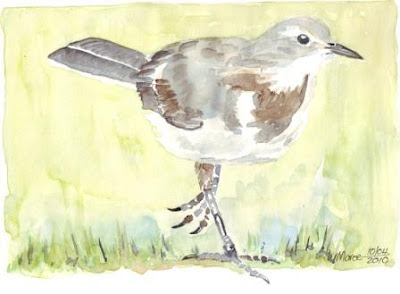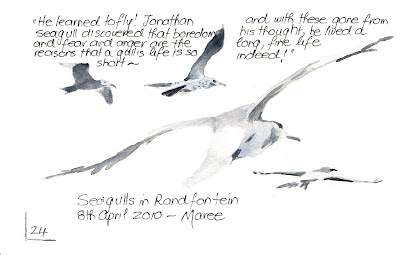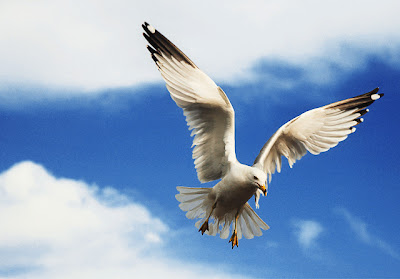All Creatures great and small,
All things wise and wonderful
The Lord made them all
Each little flower that opens
Each little bird that sings
He made their glowing colours
He made their tiny wings."

Wagtail {Motacilla capensis} - watercolour in Moleskine Folio 200gsm - 12" x 8.5" - Maree©
Gewone kwikkie [Afrikaans]; Umcelu, Umvemve, Umventshana (generic terms for wagtail - [Xhosa]; umVemve (generic term for wagtail - [Zulu]; Kamukombo (generic term for wagtails - [Kwangali]; Motjoli (generic term for wagtails - [South Sotho]; Moletašaka [North Sotho]; Mandzedzerekundze, Matsherhani, N'wapesupesu [Tsonga]; Mokgôrônyane [Tswana]; Kaapse kwikstaart [Dutch]; Bergeronnette du Cap [French]; Kapstelze [German]; Alvéola do Cabo [Portuguese]
Just outside my studio window, our resident Wagtail has been acting like a water bird - wading the soaking lawns, pulling out the insects and having a feast! She stayed, not minding the rain at all, except for the hardest down-pours, during which she disappeared for a while, but was back as soon as it cleared up a bit.
We've been having enormous amounts of rain, the garden is loving it as much as the Wagtail! They've built their nest in an Olive tree inside my bathroom court yard and it amazes me that it is very low and within reaching distance. Very trusting little creatures!

The Wagtail occupies Uganda, eastern DRC and Kenya, but the bulk of its population extends from southern DRC through Zambia and Angola to southern Africa. Here it is especially common across South Africa, Swaziland and Lesotho, while more scarce in Namibia, northern and south-eastern Botswana, Zimbabwe and southern Mozambique. It can occur almost anywhere that has open ground adjacent to water, also favouring the rocky coastline, farms, villages, cultivated land, parks, gardens and urban centres.











